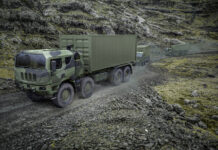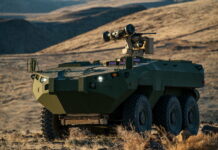Four contractors are competing for the right to build a new fleet of heavy trucks for the US Army. By leveraging state-of-the-art and next-generation commercial technology, the Pentagon hopes to acquire a modernised transport fleet tailored to the needs of multi-domain operations (MDO).
Presently, the US Army operates four different classes of heavy tactical vehicle (HTV). These are: the M915 Line Haul Tractor; the M1088 Medium Tractor; the Palletized Load System (PLS); and the Heavy Expanded Mobility Tactical Truck (HEMTT). These trucks perform line-haul operations and, depending on type, are capable of self-load/-unload of flat racks, bridging assets and ISO containers. The base vehicles are also provided in various specialised configurations including tanker, heavy dump truck and concrete mixer truck.
The Common Tactical Truck (CTT) programme aims to procure a single new family of vehicles (FOV) which can be customised to take on all of these roles. The FOV will have at least five variants: an on-road tractor; an off-road tractor; a load handling system; a cargo-bed with crane; and a tanker. The CTT programme is managed by the Program Executive Office Combat Support and Combat System Support (PEO CS & CSS). The programme is being pursued as a rapid prototyping initiative using a middle-tier acquisition (MTA) strategy and other transactional authorities (OTA) in order to accelerate the test and evaluation process. As defined by the Program Executive Office, “the CTT will deliver all classes of supply, breakbulk, bridging, and containerized cargo across all tactical mobility levels as far forward as the mission requires, [serving as] an essential transportation link” between strategic ports and the front line.

Credit: US Army
Advantages
As conceived, CTT is intended to combine modern military and commercial technology. The Army plans to introduce technologies already either established or currently in the developmental phase in the civilian trucking market, such as telematics, predictive maintenance, and advanced driver assistance and safety systems. The new trucks should also be preconfigured for future introduction of drive-by-wire and autonomous operations.
Currently, there are no plans to transition from internal combustion engines to hybrid or electric drive. Additionally, specific military-grade survivability, force protection and manoeuvrability standards must be incorporated beyond civilian levels. One specific requirement is an exportable power system capable of producing 20 kW of power at 28 V; according to Army documents, peak onboard power capacity should be 75 amps at 24 V to power the communications systems, although a higher capacity would surely be welcome, as it would allow for future technology upgrades.
Finally, the increased standardisation within the vehicle fleet is expected to streamline maintenance and training requirements for the fleet. Open modular designs will ensure that repair parts are interchangeable across the fleet, while relying increasingly on standard civilian vehicle components will enable the Pentagon to benefit from civilian-industry research and development as well as commercial production economies of scale. This will not only reduce the logistics burden and manpower requirements, especially when coupled with improved fuel economy, but will reduce operating and lifecycle costs. Overall, the new acquisition approach is expected to allow the Army to modernise at the pace of industry, mitigating future obsolescence and integrating new technologies as they are developed, according to Wolfgang Petermann, project manager for transportation systems at the PEO CS & CSS.
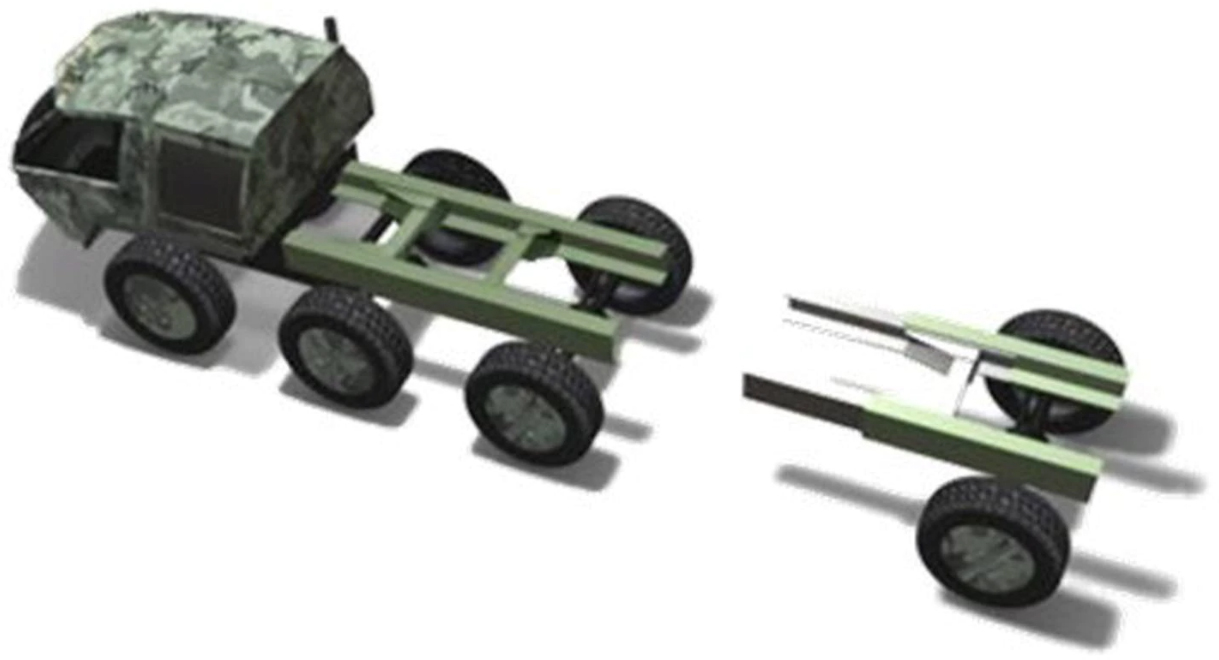
Credit: US Army
Prototype Competition
The Army Requirements Oversight Council approved the rapid prototyping effort in July 2021 to evaluate the feasibility of procuring modified commercial-off-the-shelf (COTS) solutions to modernise the aging heavy vehicle fleet. The Request for Prototype Proposals was released in June 2022. On 27 January 2023, the Army proceeded to the next step, awarding prototyping contracts to four competing firms or groups: Mack Defense, Navistar Defense, Oshkosh Defense, and the American Rheinmetall Vehicles/GM Defense team. Each competitor will supply the Army with three prototypes of each CTT functional variant, for a total of 15 prototypes per firm. Additionally, the contenders will provide digital designs of all variants as well as a design study for a wrecker. The results of the prototyping phase will determine whether commercially based variants are currently capable of meeting military requirements. The contracts for the prototyping phase have a cumulative value of USD 24.5 M.
Mack Defense
Mack Defense is basing its CTT prototype on the established Granite vehicle line. The baseline civilian Granite trucks offer standard features including a modern cab layout with: Mack Co-Pilot (a 12 cm full-colour digital display providing navigation data); automated vehicle health monitoring; the Bendix Wingman Fusion 2.0 system which integrates radar, cameras and braking system data to help drivers detect road hazards; and the Command Steer system which monitors road variations at 2,000 times per second to maintain stability in rough terrain and high winds.
A militarised variant of the Granite FOV is already in US Army service as the M917A3 Heavy Duty Dump Truck (HDT); five different variants are in Canadian Army service. The M917A3 introduced backup cameras, blind spot detection, electronic windows and mirrors, and a smartphone charging plug as standard equipment for the first time on Army logistics vehicles. Specifically, military solutions offered for Mack Defense trucks include scalable armour options to optimise the balance between protection and mobility.
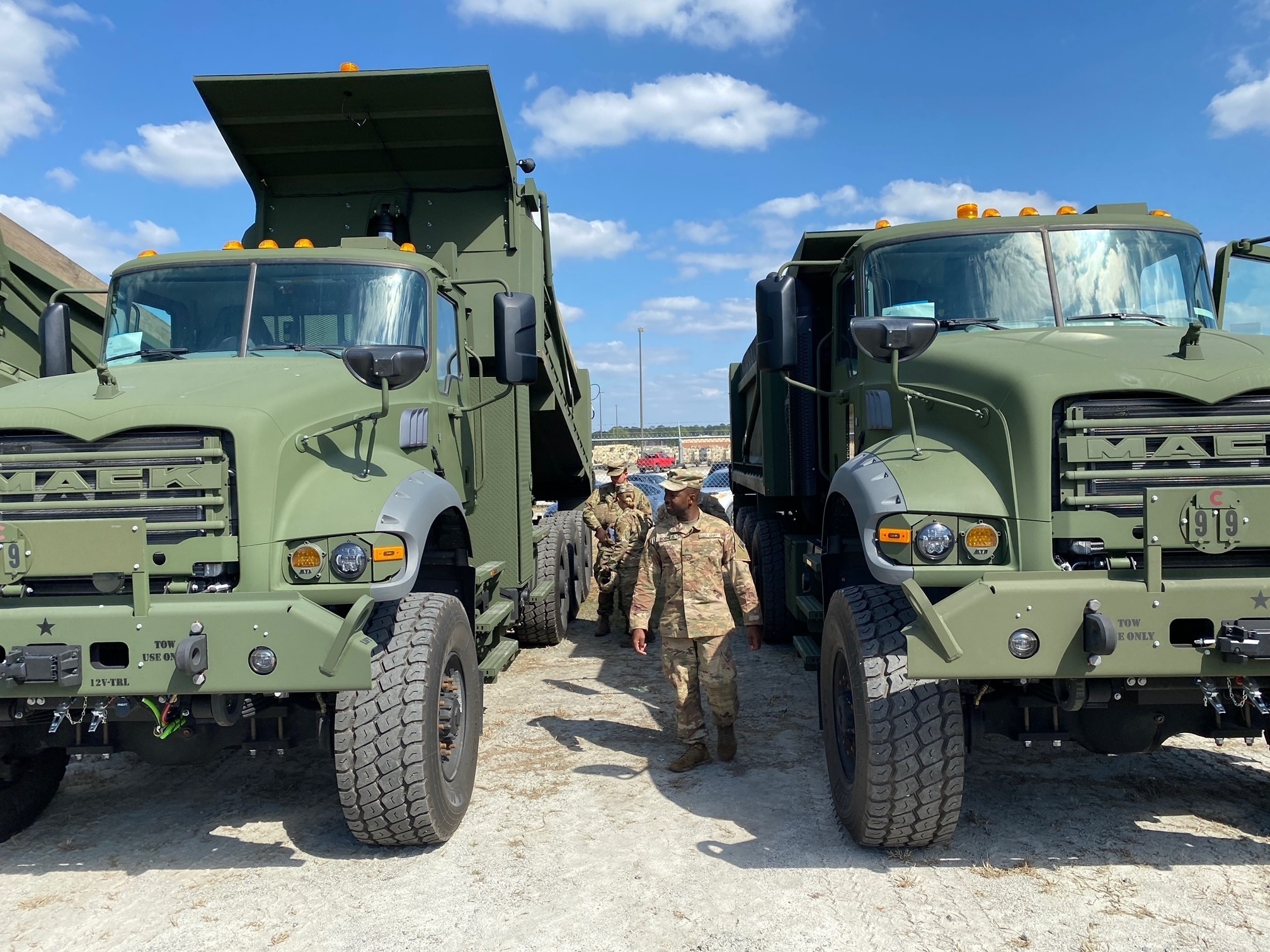
Credit: US Army
Navistar Defense
On receiving the prototyping award, Navistar Defense underscored its experience in designing and building both civilian and military medium- and heavy-lift trucks. These include the 5000-MV tractor and the 7000-MV family of vehicles, thousands of which are serving with the Canadian Armed Forces, as well as with the Afghan and Iraqi militaries (smaller numbers are in service elsewhere in the Middle East, Asia and Latin America).
Describing his firm as “an industry leader in Militarized COTS vehicles,” Navistar Defense CEO Ted Wright emphasised that the company’s “platforms are scalable to meet the vast majority of the Army’s tactical wheeled vehicles vehicle applications and mission roles for their medium and heavy fleets.” The firm declined to provide additional details regarding its CTT prototype entry.
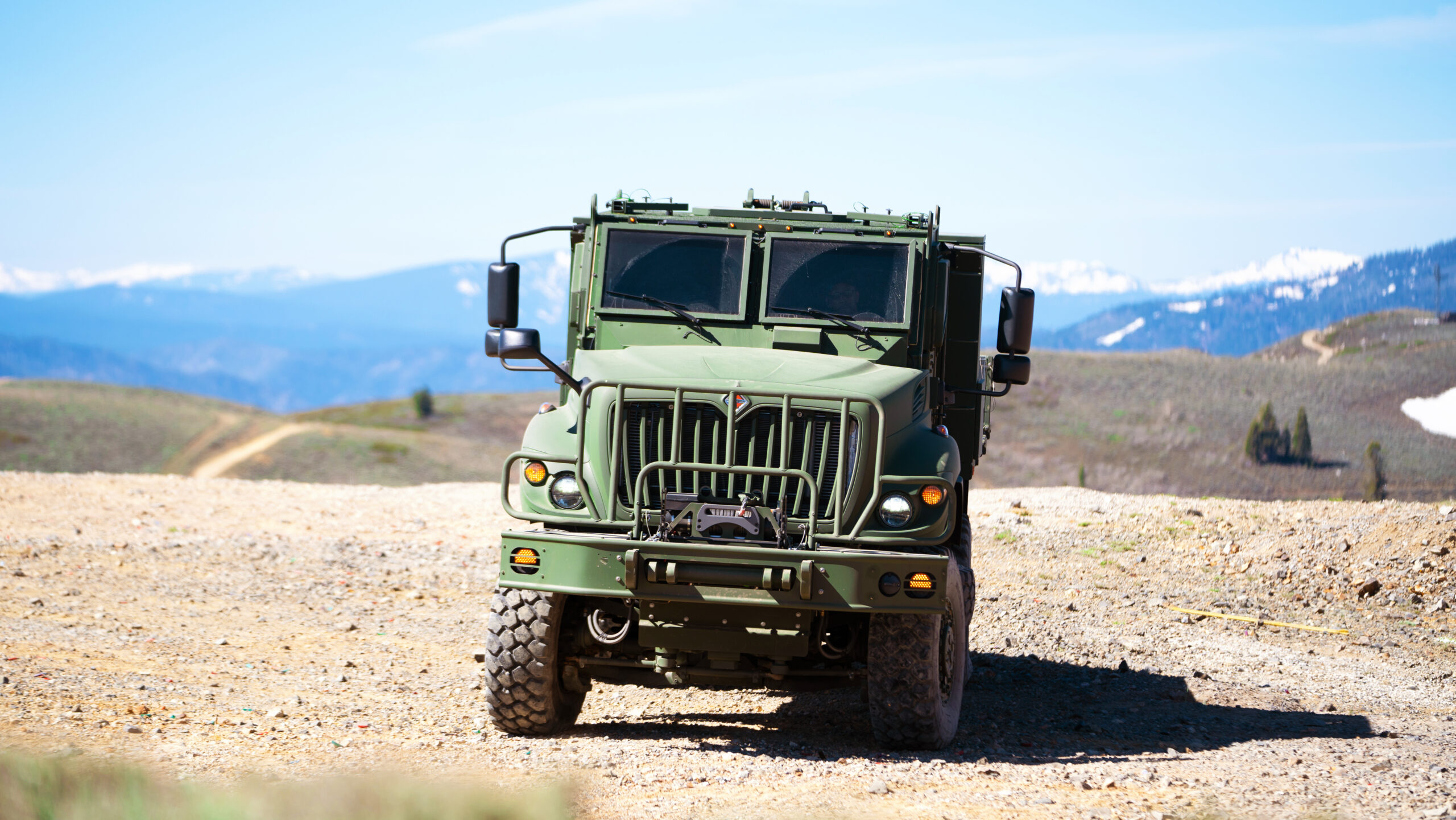
Credit: Navistar Defense
Oshkosh Defense
Oshkosh Defense plans to submit modernised concepts of its family of heavy tactical vehicles (FHTV) product line, in service with the US Army since the 1980s and which has been regularly upgraded. Oshkosh intends to provide a modernised version of the current FHTV. “The FHTV’s flexible architecture allows it to support a multitude of missions with the ability to scale up or down with minimal change to the vehicle,” Oshkosh stated in a January 2023 press release.
The firm in particular emphasised the versatility of the HEMMT and PLS variants of the FOTV line, which are utilised not only for logistics missions but as missile and artillery platforms. The flexible architecture facilitates regular technology upgrades. Oshkosh-built FHTVs now routinely feature advanced driver assistance technologies including electronic stability control, lane departure warning, and collision mitigation braking. “The advanced architecture of these vehicles allows for seamless integration of additional features, such as drive by wire capability, Condition Based Maintenance (CBM), electrification, export power, fuel efficiency and demand reduction modifications,” said Jeffrey Heggemeier, Vice President, Engineering, Oshkosh Defense.
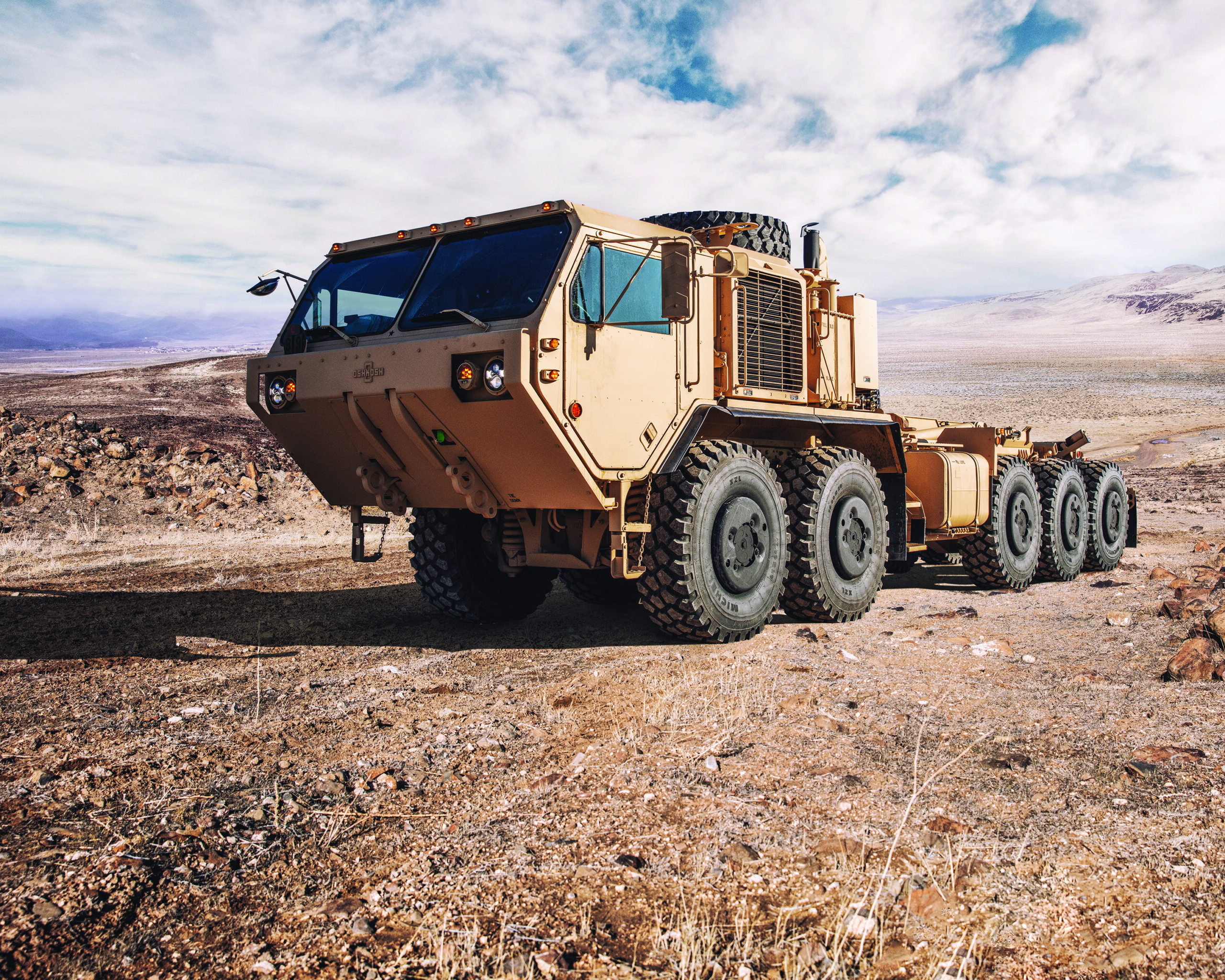
Credit: Oshkosh Defense
ARV/GM Defense
American Rheinmetall Vehicles (ARV) and GM Defense partnered in 2022 to offer the HX3-CTT, a derivative of the HX3 (the newest member of Rheinmetall’s HX truck family), and also incorporates GM commercial truck technologies. Like other members of the HX FOV, the HX3 (which begins serial production in 2024) is not a COTS vehicle. It was designed from the beginning for defence applications and is considered a military-off-the-shelf (MOTS) vehicle.
However, it does utilise a high percentage of (partially militarised) commercial MAN components. Entering the competition, ARV has one major advantage in that the HX series is in use with 20 countries, most of whom are US allies or partners. This could further ease maintenance and supply chain access while on deployment.
ARV and GM describe the HX3-CTT as a “next generation” vehicle offering a very high level of commonality and modularity across variants, including cargo, load handling systems, tankers and line-haul tractors. The partners stress advanced capabilities and attributes such as enhanced off-road manoeuvrability, an open digital architecture, drive-by-wire capability, cybersecurity and survivability. Unmanned operations ranging from leader-follower to remote controlled to full autonomy will be possible.
Emergency brake assist (EBA), adaptive cruise control (ACC) and lane departure warning (LDW) are standard features. Force protection measures include mine-blast-protected flooring, the modular armoured cabin (MAC) applique kit, and the optional integrated armour cabin (IAC) with a higher degree of protection than the baseline cab. The IAC can be swapped out for the standard cab and back again, depending on operational requirements; two technicians can perform the switch within 10 hours.
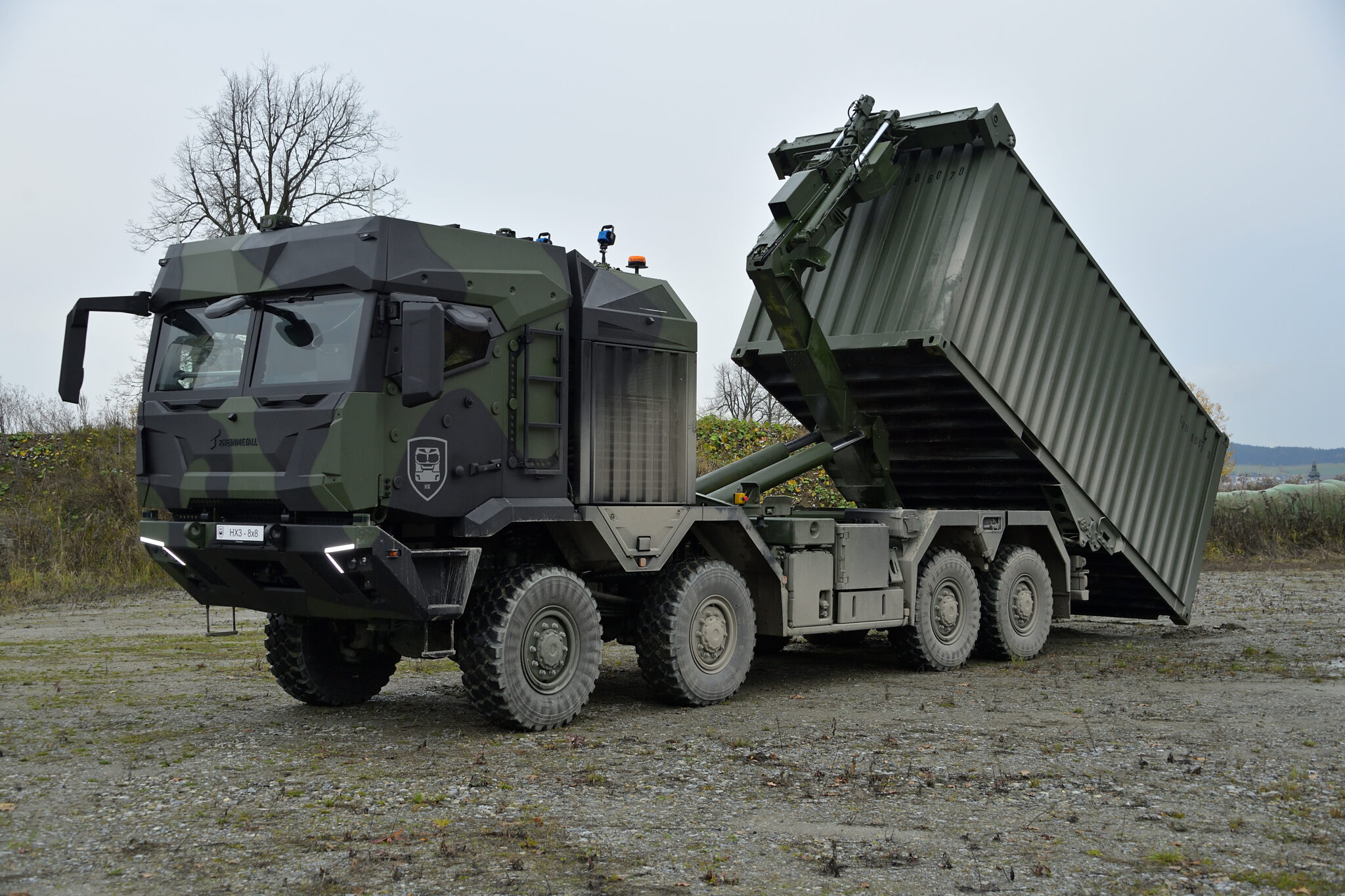
Credit: ARV
Future Timeline
The prototypes are to be delivered to the Army by January 2024 with prototype evaluation scheduled to begin in early 2024, approximately one year later than originally planned; testing is expected to conclude in 2025. The primary focus will be on whether the prototype designs are capable of performing military missions while relying heavily on COTS components and maximising commonality across the FOV.
The results of the evaluation will flow into the formulation of the Capabilities Development Document (CDD) which the programme office will submit to the Army Requirements Oversight Council. The CDD will outline the final, approved operational requirements and performance criteria for future heavy trucks.
A decision on whether to proceed with the CTT programme is expected in 2026. If the decision is positive, the PEO will conduct a full and open competition for the engineering and manufacturing development (EMD) phase; this contest will be open to offers beyond the four firms selected for the prototyping phase. Interested firms will be required to deliver production-representative vehicles which will undergo a competitive testing programme.
The testing programme will include so-called soldier touch points, which are immersive testing and feedback mechanisms through which operational personnel provide practical input on how equipment could be improved before final designs are locked down. A CTT production contract to a single manufacturer will be awarded following positive evaluation of the test vehicles’ performance and attributes.
The goal is to advance to an initial production contract for between 5,700 and 7,000 vehicles. Current planning projects that procurement of CTT could begin in Fiscal Year 2028. Additional tranches will follow the first purchase contract with the total acquisition goal being approximately 40,000 vehicles. Ultimately, the CTT award could have a cumulative value of circa USD 14 Bn.
Sidney E. Dean







